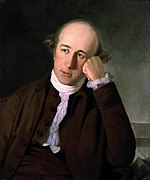Viceroys of India
| Governor-General of India | |
|---|---|

|
|
|
Warren Hastings, the
first Governor-General of India |
|
| Style | His Excellency |
| Residence | Viceroy's House |
| Appointer |
|
| Formation | 20 October 1774 |
| First holder | Warren Hastings |
| Final holder | C. Rajagopalachari |
| Abolished | 26 January 1950 |
The Governor-General of India (or, from 1858 to 1947, the Viceroy and Governor-General of India, commonly shortened to Viceroy of India) was originally the head of the British administration in India and, later, after Pakistani and Indian independence in 1947, the representative of the Indian monarch and head of state. The office was created in 1773, with the title of Governor-General of the Presidency of Fort William. The officer had direct control only over Fort William, but supervised other British East India Company officials in India. Complete authority over all of British India was granted in 1833, and the official came to be known as the "Governor-General of India".
In 1858, the territories of the East India Company came under the direct control of the British government; see British Raj. The governor-general (now also the viceroy) headed the central government of India, which administered the provinces of British India, including the Punjab, Bengal, Bombay, Madras, the United Provinces, and others. However, much of India was not ruled directly by the British government; outside the provinces of British India, there were hundreds of nominally sovereign princely states or "native states", whose relationship was not with the British government, but directly with the monarch. To reflect the governor-general's role as the representative of the monarch to the feudal rulers of the princely states, from 1858 the term Viceroy and Governor-General of India (known in short as the Viceroy of India) was applied to him.
...
Wikipedia

